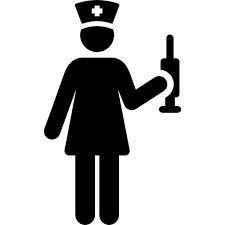Public Transportation: for Local Job Connection
Feb 01 2017
Direct and Indirect Jobs
Investments in all forms of transportation spur job creation, but this is especially true of investments in public transportation.
Every $1 billion invested in public transportation creates and supports approximately 50,000 local jobs. In particular, public transportation spurs the development and expansion of business clusters — regions where interconnected businesses speed economic growth and job creation for their areas. Congested roadways and insufficient transportation options tend to slow job growth. Investments in public transit improvements could lead to the creation of an estimated 480,000 jobs in business clusters by 2040.
Expanded public transportation services will also create more direct employment. Today, approximately 7,200 public U.S. transportation organizations employ about 400,000 people. New technologies not only continue to make public transportation more efficient, but also create more work opportunities.
Job Access
Public transportation doesn’t just support jobs by attracting investments near transit lines. It also connects employers to employees, and gives people access to a wider array of employment options. For people who can’t drive — for instance, due to a disability — or who don’t have access to a car, public transportation can be life-changing when it comes to their professional opportunities.
In a study conducted by Harvard University researchers, access to public transit was found to be the No. 1 factor for lifting people out of poverty. Reliable transportation enables greater employment options for lower-income Americans. When public transportation is unavailable and commute times are long, poverty rates are higher.
When people are mobile, they can also participate more broadly in the economy — by accessing shopping, events, and services, thereby stimulating more jobs in each of these sectors.
Not every member of Congress recognizes the value of public transportation, and some don’t realize the relationship between public transportation and job creation. When we advocate for public transportation, let’s be sure to connect the dots between public transit and local job and employment growth.
The Road out of Poverty Is Paved With Better Transportation
TakePart.com•September 25, 2015
Long commutes and lack of access are the frustrating reality for many public transit riders in the United States, and experts say that’s a major obstacle to lifting people out of poverty.
Transit access is the No. 1 factor in escaping the cycle of poverty—more directly correlated to improving socioeconomic status than crime rates, school quality, and family structure, according to an ongoing Harvard University study. In cities with notoriously long commute times, such as Los Angeles, Atlanta, and Dallas, upward social mobility is harder to achieve, and people who live in neighborhoods with poor transit access suffer from lack of store choice when shopping and little flexibility when it comes to scheduling work hours, the researchers found.
The Ferguson Commission is an independent agency created by Missouri’s governor to study the social and economic conditions in the St. Louis area after black teen Michael Brown was shot and killed by a white police officer, sparking national protests calling for recognition of deadly racial tensions in American policing. The report, released earlier this month, recommends increased funding for transportation, as well as promoting and encouraging more widespread use of buses and trains. Only 24 percent of area jobs in the St. Louis metropolitan area are accessible by a 90-minute transit ride, according to the Brookings Institution’s "Profiles of Transit Accessibility in the Largest 100 Metro Areas." St. Louis ranked 68 out of 100 metropolitan areas in terms of job access via transit.
That places particular importance on a piece of federal legislation making its way through Congress—which has not passed a transportation bill that lasted longer than two years since 2005. Experts say these stopgaps lack the consistency that would allow local transportation agencies to plan long-term construction and capital projects. The latest stopgap is scheduled to expire Oct. 29, and there’s no sign of progress on a long-term bill.
The problem is that funding for improving access is just not available yet, according to Kimberly Cella, executive director of St. Louis Citizens for Modern Transit, a group that is advocating for the passage of a five-year federal transportation bill.
“This isn’t just a Ferguson issue. We need to see expanded, integrated transit systems because it’s about access to jobs, opportunities for greater economic development, and reinvestment in underserved portions of our community,” said Cella. “That just isn’t happening right now.”
Cities in states like Missouri, with little to offer in terms of matching funds, struggle to obtain the federal transportation funding that makes expansion and capital construction possible.
Nearly 60 percent of the 35 million daily public transportation rides serve minorities, according to a study by the American Public Transportation Association, an advocacy group for transit riders. African Americans are particularly dependent on public transit; despite being only 12.5 percent of the population, they make up 33.1 percent of total transit rides, making them particularly vulnerable to the consequences of poor access.
Despite the need for better transit access and more reliable service for low-income communities, a coalition of 50 groups, several of which are affiliated with the Koch brothers and the Tea Party, sent a letter to Congress asking that all federal money that goes to walking, biking, and transit projects be cut. If that happens, local transportation budgets would be completely upended. Cities like Los Angeles, Denver, and Portland, Oregon have leveraged local, state, and federal funds and loans to accelerate expansion of their public transportation systems. The five rail lines under construction in Los Angeles County, with a price tag of $36 billion, combine to form the largest public works project in the United States.
“The buses on my route are 40 minutes apart, which can make me really late for school or for work,” said Ryan Meis, an IT assistant at a hospice office who commutes four hours from the heavily Latino Inland Empire, about 60 miles outside Los Angeles, to wealthy Pasadena every day. “If I miss a bus, or if it comes earlier than scheduled, that’s basically half my class or an hour off my paycheck.”
Public Transit is the No. 1 Way for Lifting People Out of Poverty –
more important than school quality or family structure, reliable transportation enables greater employment options for the lower income






